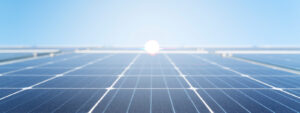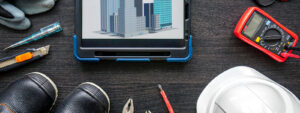With the rapid progress in the development and upgrading of the core technologies that lead the Fourth Industrial Revolution, there is a boom in the construction of so-called “smart cities” around the world, based on hyper-connectedness, the Internet of Things (IoT), and intelligent infrastructure.
The idea of smart cities is predicated upon the construction of “smart buildings.” Such edifices are being built in many places. In fact, growth in the smart buildings market is expected to expand the market size to an estimated 78.2 billion USD by 2030.
Samsung C&T Engineering & Construction Group recently completed construction of a state-of-the-art smart building to be the second office building for Naver, South Korea’s largest online platform company. According to Naver’s desire to realize innovation, this smart building has laid the foundation for the realization of a smart city by utilizing a range of innovative technologies from the era of the Fourth Industrial Revolution, including artificial intelligence, autonomous driving, robots, cloud computing, and, of course, IoT.
Kinder to robots
Naver’s second headquarters building is called 1784, named both after its address, 178-4 Jeongja-dong, Bundang-gu, Seongnam City in Gyeonggi Province, and the year of the beginning of the original Industrial Revolution. Bringing the geographical address together with industrial history, the name 1784 signifies a space where innovation becomes a reality.
The building has 8 floors below ground and 28 above, with a total floor area of 168,179 square meters. The construction of this edifice was done in such a way that the latest cutting-edge technology could be incorporated, creating a new paradigm of architecture.
With construction beginning in 2016, Naver’s 1784 is the world’s first robot-friendly building, with its chief concept being “technological convergence.” It will be used as a testbed for Naver’s cutting-edge technology.
One thing that immediately sets 1784 apart from other office buildings is that it has a large population of autonomous mobile robots within it. In fact, the building is equipped with a robot-friendly infrastructure and was constructed so that robots using technologies such as autonomous driving, AI, and cloud computing can move around freely.
These robots are called “Rookies”, which assist human employees in various ways such as parcel delivery. Rookies move between floors by use of “Roboports,” which are the world’s first elevators exclusively for robots. A Roboport receives a signal sent by a Rookie to summon an elevator to a given floor, causing it to stop and pick up a robotic passenger. This shows that Naver’s goals to create a better work environment and utilize various prior technologies can be realized throughout the building.
Interestingly, the plan to install Roboports had not been included in the master plan. When the decision was made to include them in the building, it was necessary to reinstall or re-work piping and cables that had already been laid. This was not an easy task, but Samsung C&T managed to proceed with the job smoothly thanks to its accumulated technology and expertise.
Kinder to the environment
The 1784 Building has been awarded Platinum status in the globally used green building certification program Leadership in Energy and Environmental Design (LEED). This is not surprising given that the annual energy consumption per unit area of this building is about 34% less than other business facilities.
To keep office space cool in the summer, 1784 uses radiant panel air conditioning. This is a system in which ceiling panels are fitted with copper pipes that circulate water cooled to a temperature of 16 degrees Celsius. Air conditioning using radiant panels is both effective in saving energy and feels pleasant.
Some of the energy used in the building is geothermal energy, which is taken in overnight and stored, to be used to power both air conditioning and heating during the day. In addition, A total of 352 solar panels, each generating 400 watts of energy, are installed on the roof.
The walls of the building are double-layered, and glass windows have been added outside of the exterior walls to reduce energy use. Between the walls and the glass there is space for air to move and wind to carry heat away. Light coming into the building is adjusted using specially designed electronic louvers.
Throughout the building, concrete is left exposed without a separate finishing material overlaid on top. This is because exposed concrete has better insulating properties, helping to keep rooms at an even temperature. In addition, it is more environmentally friendly as less waste is generated. Furthermore, Samsung C&T found a mold that can be used multiple times in the building process, thereby causing less waste while still obtaining satisfactory results in terms of quality, price, environmental impact, and worker safety.
Kinder to humans
“Safety First” is more than a slogan at Samsung C&T – it is part of the culture. With this as Samsung C&T E&C Group’s first management principle, together with the desire of the client Naver, safety management on the site of 1784’s construction was more thorough than ever.
In order to ensure a safe worksite, field technicians were allowed to get to work only after going through risk awareness training relevant to the task at hand, as well as consultation on preliminary planning and the details of their tasks.
Moreover, Samsung C&T paid close attention to the health and welfare of technicians while carrying out this project, ensuring that they felt valued and respected, as well as safe.
Samsung C&T: Building cities around the world
With the completion of this building in June 2022, Samsung C&T E&C Group filled another space on an empty map. Even before 1784, Samsung C&T was already working to build smarter buildings and contributing to making smart cities globally.
One of them is Busan Eco Delta City, a pilot smart city project to turn 11.77 square kilometers of land into a global cultural space, a waterfront eco city, and a future logistics and service hub.
Outside Korea, Samsung C&T E&C Group is working hard to make its mark in city construction around the world. Examples include the majestic and iconic Petronas Towers and the 556-meter-tall KL118 Tower, both in Malaysia; the 828-meter Burj Khalia in Dubai, still the world’s tallest building; the Taipei 101 tower; the mixed-use high-rise Tanjong Pagar Center in Singapore; and the Worli Tower Project in the Mumbai Metropolitan Region.
Samsung C&T is contributing to the creation of new spaces through the construction of infrastructure other than buildings. This new Naver building 1784, ordered by Naver and built by Samsung C&T, is expected to influence the implementation of other smart buildings and even smart cities.










